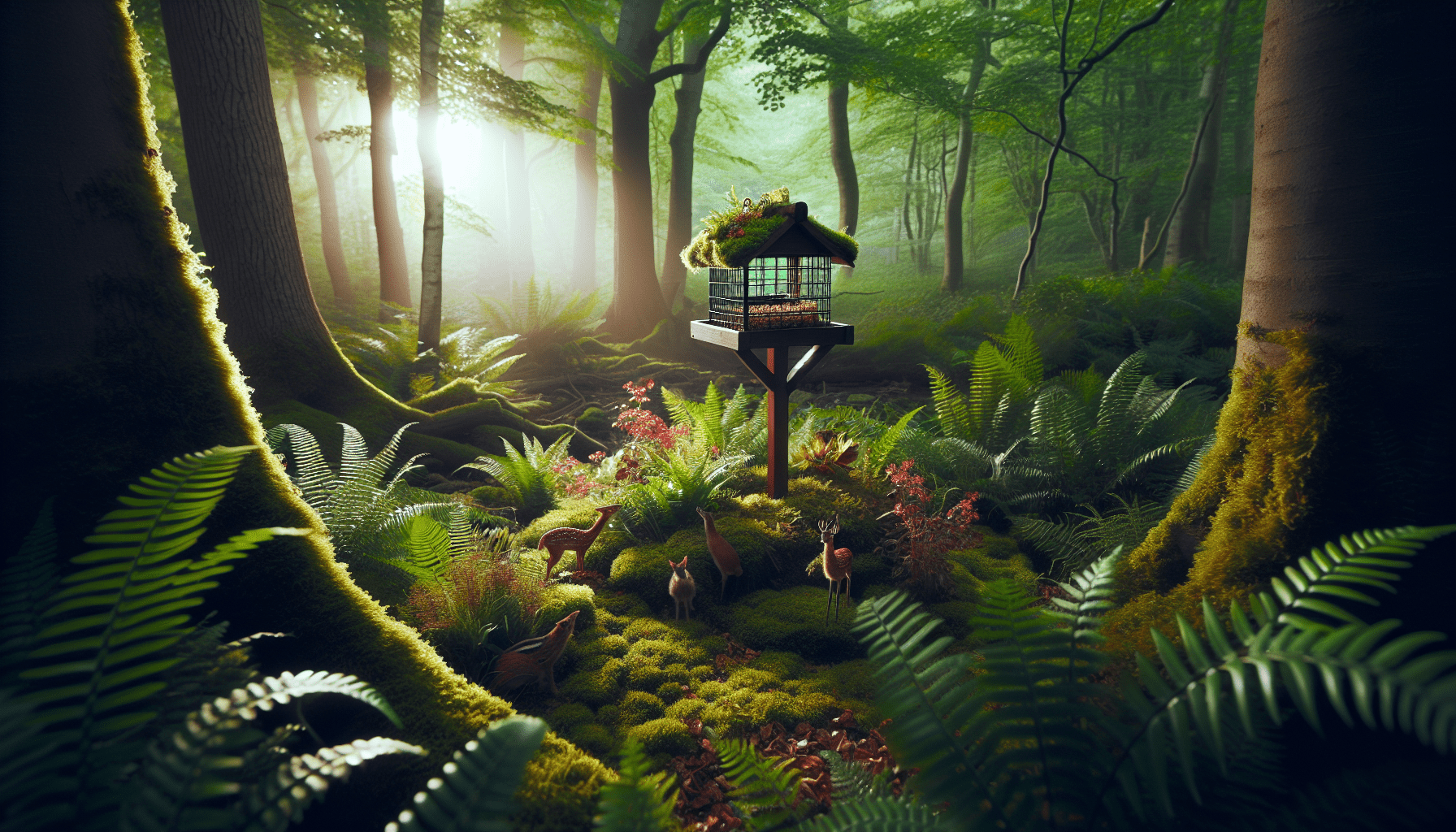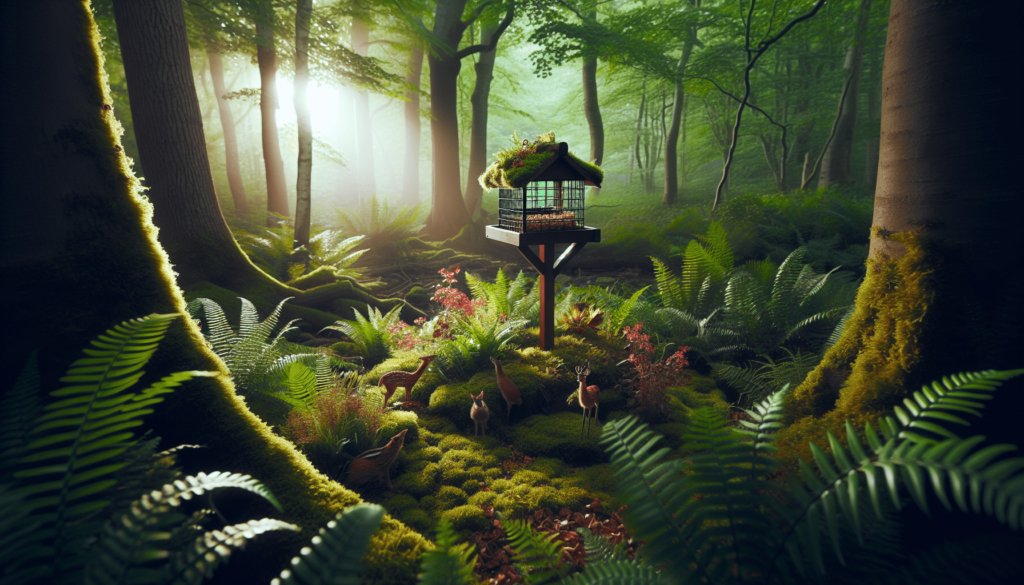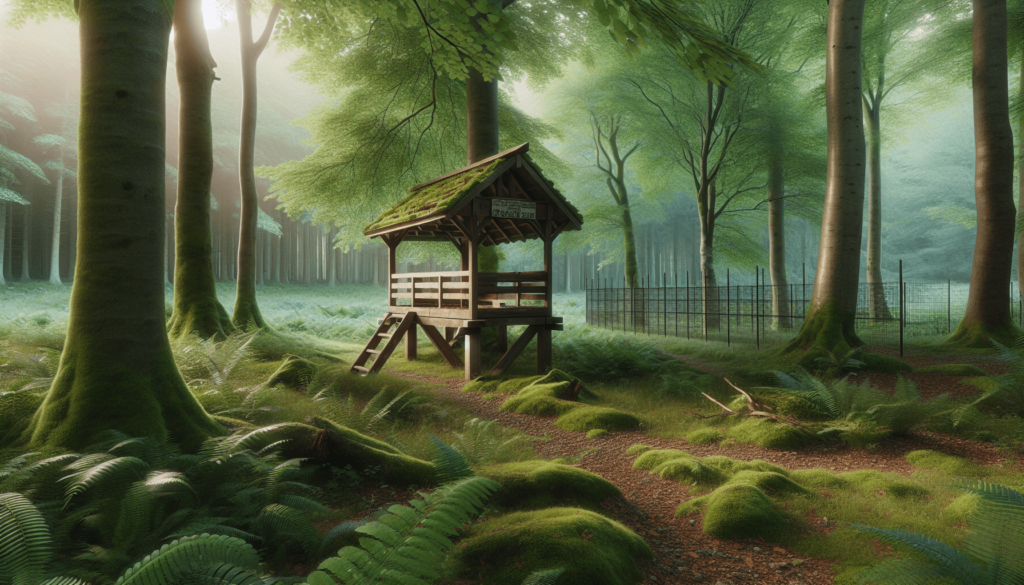
What do you do when you notice unwanted visitors ransacking your deer feeder? You may have designed it to attract those serene, graceful creatures, but it seems others have found it a buffet as well. Let’s talk about deer feeder pest control and how you can keep those unwanted guests at bay, so your deer can enjoy the food meant for them.
Understanding the Problem
When setting up a deer feeder, it’s not only the deer you need to consider. A variety of pests can be drawn to the feeder. Whether it’s raccoons stealing the feed under the cover of night or squirrels raiding your carefully placed grains during the day, it can be quite the headache.
You might feel frustrated, but knowing what you’re dealing with is half the battle. Before you can tackle these issues, let’s examine who might be lurking around your feeder.
Common Pests at Deer Feeders
Here are some of the most common unwelcome guests that might show up:
| Pest | Description | Concerns |
|---|---|---|
| Raccoons | Nocturnal, clever, and often destructive. They can easily knock over feeders. | Damage to the feeder, contamination of feed. |
| Squirrels | Agile and persistent, they can quickly deplete the feed supplies. | Overconsumption, making it harder for deer to access food. |
| Birds | Various species can be attracted, leading to competition for food. | Contamination and reduced availability for deer. |
| Rodents | Mice, voles, and other small mammals can be quite stealthy. | Disease risk and competition for feed. |
Understanding who your intruders are will help you develop effective deer feeder pest control strategies tailored to your specific situation.
Preventive Measures
Before confronting pests head-on, consider preemptive strategies to deter them from making your deer feeder part of their regular route. Prevention can save you time and trouble later.
Choosing the Right Location
The placement of your deer feeder can significantly impact pest attraction. Picking a strategic location can help keep those sneaky critters at bay.
-
Elevation: Position your deer feeder off the ground if possible. For instance, using a tall stand can make it difficult for raccoons to access the food.
-
Distance from Cover: Position the feeder away from thick brush or trees where pests can easily hide. Open areas can discourage unwanted guests.
-
Clear the Surroundings: Keep the area around the feeder free of debris. This includes cleaning up any spilled feed regularly, which can attract rodents and birds.
Choosing the Right Feeder
You might not think that the type of feeder matters, but investing in a quality deer feeder can make a difference.
-
Squirrel-Proof Feeders: Look for commercial feeders equipped with mechanisms that deter squirrels and raccoons. Some models close holes when a heavier animal attempts to access the feed.
-
Sealed Feed Storage: Choose feeders designed to keep feed secure from both pests and the elements, preventing creatures from accessing the food supply.
-
Weight Sensors: Some high-tech feeders even have weight sensors that can tell you what type of animal is accessing the feeder, alerting you to potential pest problems right away.

Active Control Measures
If you’ve already found those uninvited guests enjoying your feeder, it may be time to consider some active pest control measures.
Traps
When it comes to dealing with pests, traps can be an effective solution.
-
Live Traps: These are humane traps specifically designed for catching raccoons and other small mammals without harming them. After capture, you can relocate them far from your property.
-
Snap Traps: While less humane, snap traps can be emotive. If using this method, follow your local laws and regulations for pest control.
-
Rodent Baits: If you’re facing a rodent invasion, consider using bait stations strategically placed around your yard, making sure they’re in areas that are inaccessible to non-target animals.
Deterrents
In addition to trapping, several deterrents can discourage pests from making return trips to your deer feeder.
-
Chemical Repellents: Certain scents can deter pests. For example, predator urine can create the illusion of danger in the area, pushing animals away.
-
Motion-Activated Sprinklers: These can surprise persistent pests and encourage them to find a more hospitable environment.
-
Noise Devices: Ultrasonic sound devices emit high-frequency sounds that are annoying to pests but inaudible to humans. This can be effective in keeping various creatures at bay.
Regular Monitoring
Be vigilant and regularly check your deer feeder for signs of pests. If activity appears to rise, you may need to recalibrate your strategies.
-
Daily Checks: Look for tracks around your feeder or signs of damage during daily visits.
-
Recording Activity: Keeping a log of what animals visit your feeder can help elucidate patterns in pest activity.
-
Change Feed: Occasionally changing your feed can deter habitual pests while enticing deer to return.
Attracting Deer Over Pests
After implementing pest control strategies, your goal should still focus on drawing deer to your feeder.
Choosing the Right Feed
The right feed is essential for ensuring that deer feel comfortable visiting your feeder instead of being driven away by competition.
-
Corn: An old favorite among deer, corn is a highly caloric choice that attracts them while not being as favored by some pests.
-
Protein Blocks: High-protein feed can be beneficial for deer health and can draw them even when other snacks might attract pests.
-
Apple Slices and Fruit: These natural treats can entice deer while simultaneously making your feeder less desirable for some other animals due to the sweet, pungent smells.
Timing and Weather
Understanding deer behavior can also help you determine optimal times to place food.
-
Timing: Deer are crepuscular, meaning they are most active at dawn and dusk. Fill the feeder during those times for the best results.
-
Seasonal Changes: Be mindful of variations throughout the year. During colder months, deer may become more desperate for food and could venture closer to your feeder.

Long-Term Solutions
If you find yourself continuously battling pests, consider evaluating your landscape and making long-term changes.
Landscaping Choices
Your landscaping design can either attract or repel various animals.
-
Reducing Cover: Regularly trim trees and bushes that provide hiding spaces for pests.
-
Plant Selection: Using plants known to deter certain animals can help. For instance, some deer-resistant plants can also deter rodents and other smaller pests.
-
Fencing: A well-constructed fence can be one of the most effective measures to keep larger animals like raccoons away from your feeders.
Controlling Food Sources
Assessment of other food sources around your property can lessen pest populations.
-
Compost Bins: These can attract various pests. Ensure your bin is secured or moved away from the feeder area.
-
Trash Management: Never leave trash out or accessible to raccoons, as they can become reliant on easy food sources.
-
Bird Feeders: If you have bird feeders as well, these may attract pests. Make sure that food dropped underneath is cleaned up, or consider hanging these items higher.
Educating Others
It’s always helpful to share your knowledge. You can work as part of a community to help control pests around deer feeders.
Community Programs
Many communities have programs focusing on wildlife management and pest control. Engage with these resources to learn more and to help spread awareness.
-
Local Workshops: Look for local wildlife management workshops or community discussions. Sharing what you have learned can benefit others.
-
Social Media Groups: Platforms dedicated to outdoor enthusiasts often have sections focused on pest control. Join discussions or start your own thread on effective methods.
-
Sharing Resources: If you’ve found helpful traps or deterrents, why not share these resources with your community?
Conclusion: A Careful Balance
Through smart planning and thoughtful strategies, you can successfully keep pests at bay while still attracting deer to your feeder. Remember to be mindful of your natural surroundings and understand that maintaining a delicate balance between nature and wildlife is essential. This not only benefits the deer but also fosters a responsible approach to coexistence with other creatures.
The key lies in your understanding and approach. By implementing these strategies effectively, you can enjoy the beauty of wildlife without the headache of unwanted visitors, ensuring that your deer feeder remains a haven for deer just as you intended. Your diligence and care for the environment will surely pay off. So, prepare to witness the serene beauty of deer, as you uphold a peaceful and inviting atmosphere within your outdoor space.





